31.05.2021

Overview
SpaceX’s 22nd contracted cargo resupply mission with NASA to the International Space Station will deliver more than 7,300 pounds of science, research, crew supplies, and vehicle hardware, including new solar arrays, to the orbital laboratory and its crew. This is the second mission under SpaceX’s Commercial Resupply Services-2 contract with NASA. Launch is targeted for Thursday, June 3, at 1:29 p.m. EDT. Launch activities will air live on NASA Television, the NASA app, and the agency’s website.
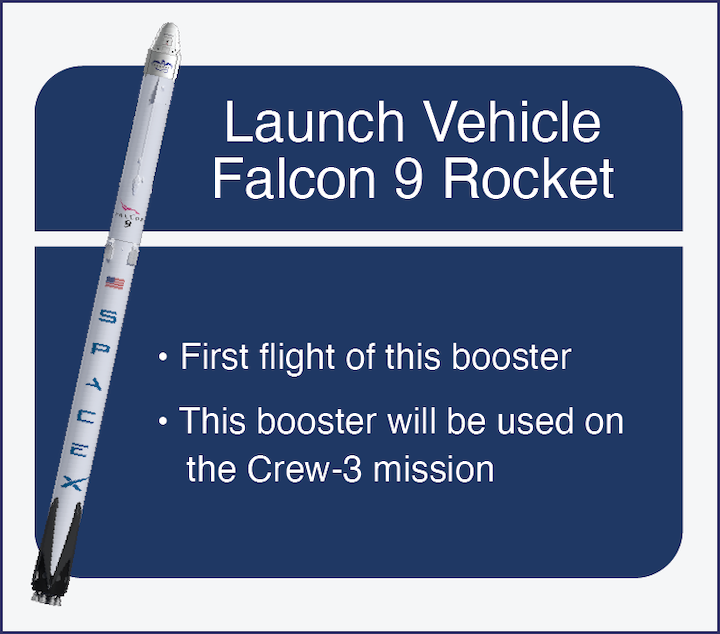
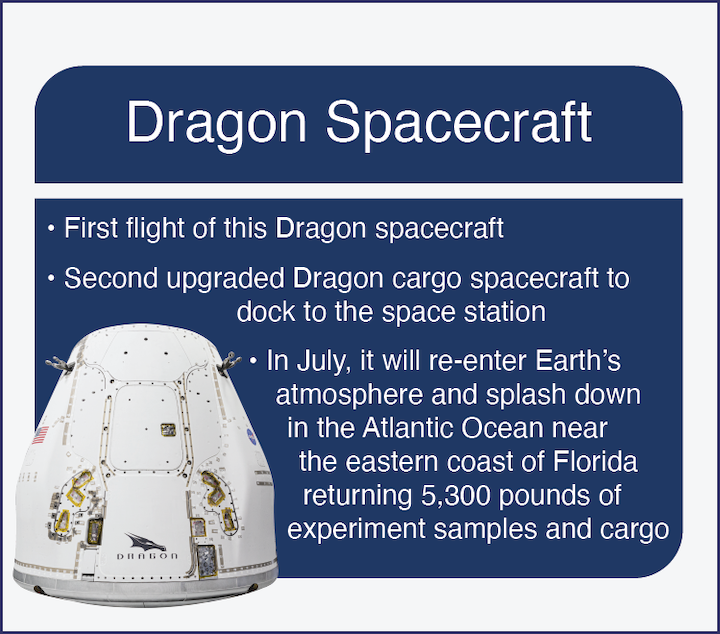
Research Highlights
Hundreds of experiments are being conducted on the International Space Station in the areas of biology and biotechnology, physical sciences, and Earth and space science. This research helps us better understand how to prepare for future long-duration missions to the Moon and Mars, supports a growing space economy, and leads to developments that improve life on Earth. The SpaceX cargo spacecraft will deliver dozens of investigations to the International Space Station, including:
- Research that could help develop cotton varieties that require less water and pesticides
- An experiment looking at tardigrade survival in space, which could advance understanding of the stress factors affecting humans in microgravity
- A portable ultrasound device
- A new way of providing tactile and visual feedback to astronauts during robotic operations
- A look at interactions between beneficial microbes and their animal hosts
These and other cutting-edge investigations join the hundreds of ongoing experiments aboard the orbiting laboratory. To learn more, check out our research highlights story.
Cargo Highlights
SpaceX’s Falcon 9 rocket will send the company’s Dragon spacecraft, filled with more than 7,300 pounds of research, crew supplies and hardware to the space station to support expeditions 65 and 66.
Hardware
Launch
- ISS Roll-Out Solar Arrays (IROSA) – Solar arrays launching for installation during the summer 2021 spacewalks to upgrade power capabilities on-orbit
- Catalytic Reactor - Legacy unit launching to provide critical sparing support for the water production capability for the environmental control and life support system (ECLSS)
- Commercial Crew Vehicle Emergency Breathing Air Assembly (CEBAA) Regulator Manifold Assembly (RMA) - Completing the first setup for emergency air supply capability, this integrated system supports as many as five crew members for up to one hour during an ISS emergency ammonia leak
- Zarya control module Kurs electronics unit - Critical hardware for cosmonaut remote-control docking of Russian spacecraft is launching to support planned maintenance activity during 2021
- Portable Water Dispense (PWD) Filter - Major filter assembly used to remove iodine from water consumed by the crew during nominal operations
- Commercial off-the-shelf (COTS) Air Tanks - Critical disposable air tanks to support gas resupply for routine cabin repress activities on-orbit
- Iceberg - Critical cold stowage capability to support expanded payload operations
Return:
- Catalytic Reactor Developmental Test Objective (DTO) - Developmental environmental control and life support system (ECLSS) unit returning for testing, teardown, and evaluation (TT&E) to determine the cause of failure and subsequent re-flight
- Urine Processing Assembly (UPA) Distillation Assembly - Critical ECLSS orbital replacement unit used for urine distillation, processing, and future use returning for TT&E and refurbishment to support future spares demand
- Sabatier Main Controller - Major Sabatier system hardware used in conjunction with the Oxygen Generation System (OGS) for water production needs on-orbit
- Rodent Research Habitats (AEM-X) - Habitats used during Rodent Research missions returning for refurbishment to support future missions in early 2022
- Nitrogen/Oxygen Recharge System (NORS) Recharge Tank Assembly (RTA) - Empty gas tanks returning for reuse to support high-pressure gas operations and activities on-orbit
Watch & Engage
Live coverage of the launch from Pad 39A from NASA’s Kennedy Space Center will air on NASA Television, the NASA app, and the agency’s website on June 3 at 1 p.m. ET with liftoff at 1:29 p.m. ET. The prelaunch news conference will be live at 1:30 p.m. ET on Wednesday, June 2.
Arrival & Departure
The Dragon spacecraft will arrive at the space station and autonomously dock to the space-facing port of the Harmony module on the International Space Station at approximately 5 a.m June 5. Coverage of the rendezvous and docking will begin at 3:30 a.m. NASA astronauts Shane Kimbrough and Megan McArthur will monitor the arrival of the spacecraft, which will stay aboard the orbiting laboratory for about a month before splashing down and returning critical science and hardware to teams on Earth.
Quelle: NASA
----
Update: 3.06.2021
.
Weather looks good for this week's SpaceX and NASA launch to ISS
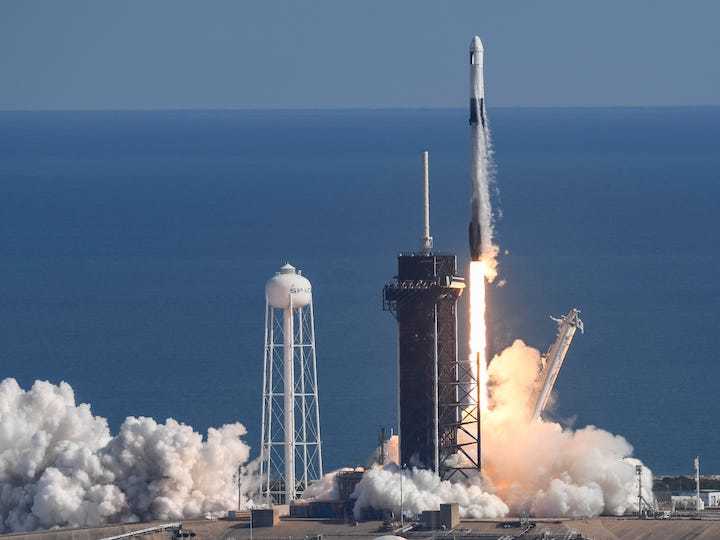
A SpaceX Falcon 9 rocket might be able to thread the needle between this week's scattered storms for its cargo launch to the International Space Station, the Space Force said Tuesday.
Despite the likelihood of rain every day this week, forecasters said Falcon 9 should face 70% "go" conditions during the instantaneous liftoff window at 1:29 p.m. Thursday. Kennedy Space Center's pad 39A will host.
The instantaneous window means Falcon 9 must fly exactly on time to "catch up" with the ISS flying overhead at some 17,500 mph. It also means launch engineers won't be able to wait out inclement weather around pad 39A, so disturbances could scrub or delay the mission to Friday or beyond.
"Remnant clouds and showers over the ocean and along the coast during the late morning may attempt to persist later, thus the main weather concerns for both launch day and delay day are the cumulus cloud rule and flight through precipitation," Space Launch Delta 45 forecasters said Tuesday.
After liftoff, the rocket's brand new 162-foot first stage will target a drone ship landing in the Atlantic Ocean. If successful, SpaceX will refurbish the booster and use it for the Crew-3 flight of astronauts Raja Chari, Thomas Marshburn, Matthias Maurer, and Kayla Barron currently planned for late October.
The Cargo Dragon spacecraft is also new, but like Falcon 9 is reusable and will fly future supply runs after splashdown next month.
Thursday's mission marks the 22nd ISS resupply for SpaceX, which has been delivering cargo and science experiments to low-Earth orbit since 2012. Onboard are 7,300 pounds of goods that will be managed by the ISS crew, including a new batch of solar arrays to augment those already used by the station.
Astronauts Shane Kimbrough and Megan McArthur will monitor Cargo Dragon's automated arrival at the ISS, currently slated for 5 a.m. Eastern time Saturday.
Launch Thursday, June 3
- Rocket: SpaceX Falcon 9
- Mission: 22nd International Space Station resupply for NASA
- Launch Time: 1:29 p.m. ET
- Launch Window: Instantaneous
- Launch Pad: 39A at Kennedy Space Center
- Landing: Drone ship
- Weather: 70% "go"
Quelle: Florida Today
----
Update: 19.30 MESZ
.
Start von SpaceX Falcon9 mit CRS-22 Mission
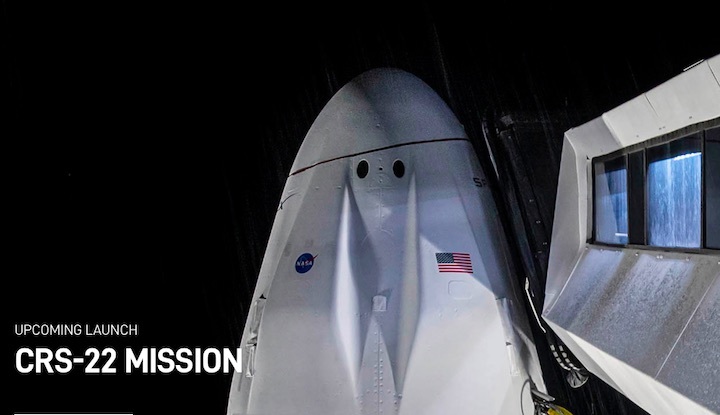
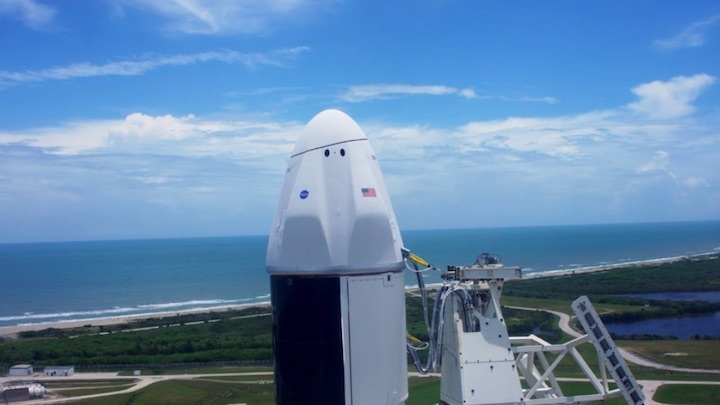
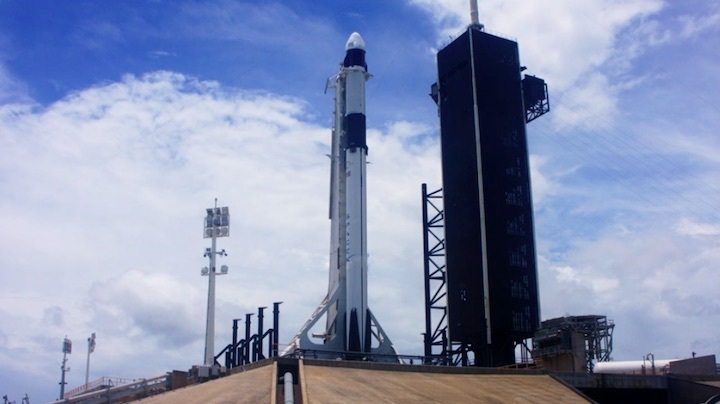
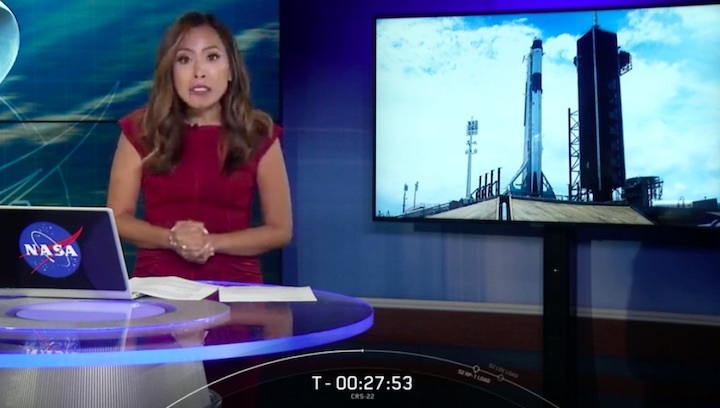

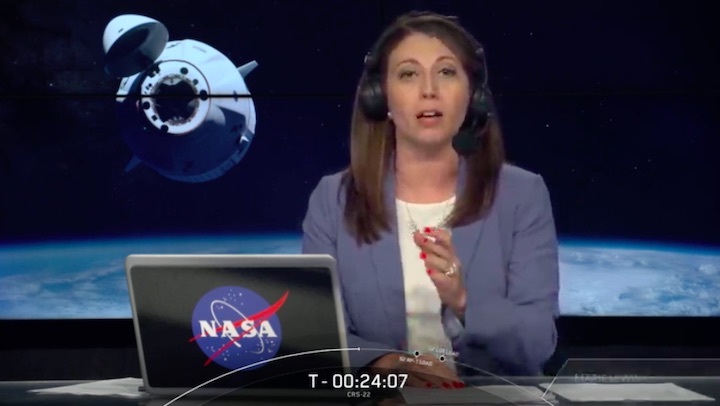
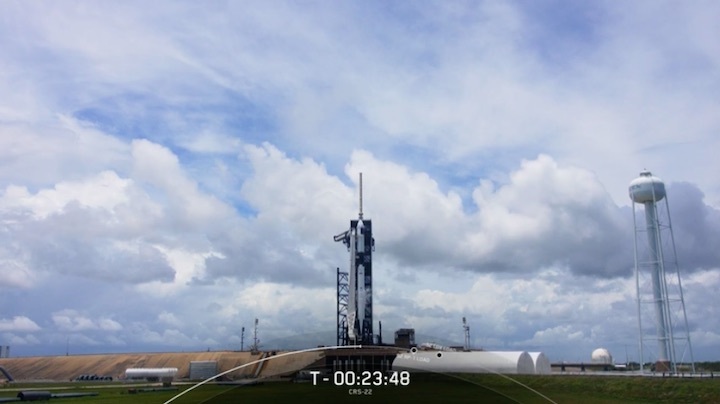
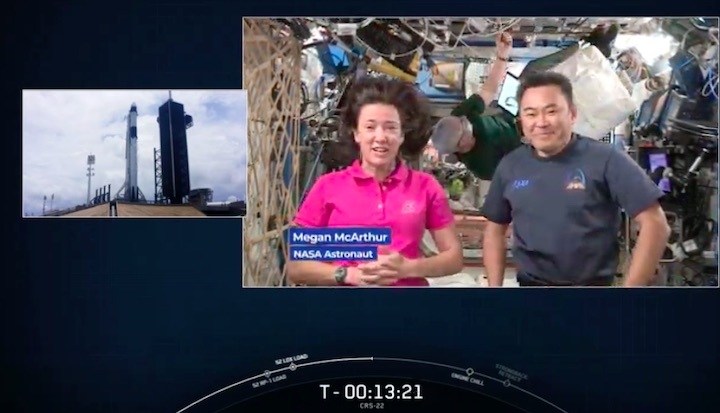



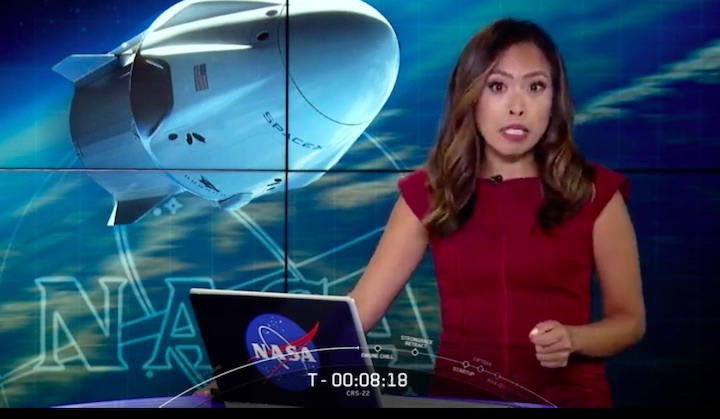
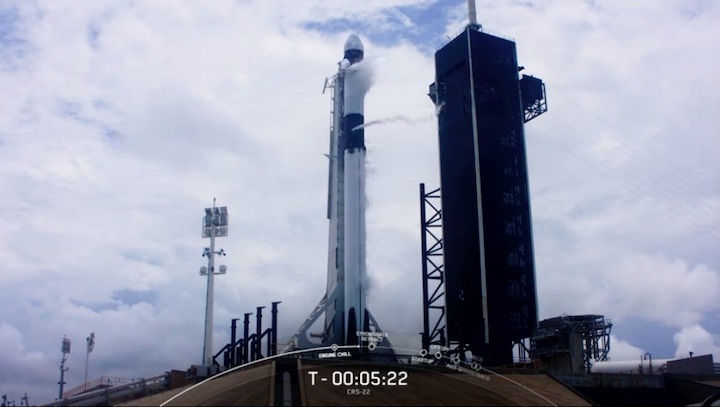

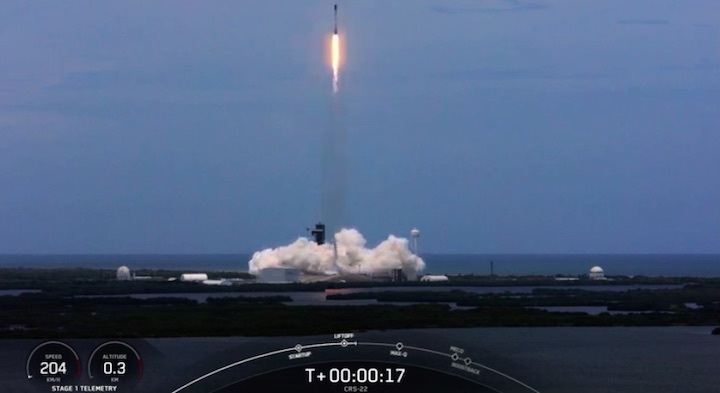
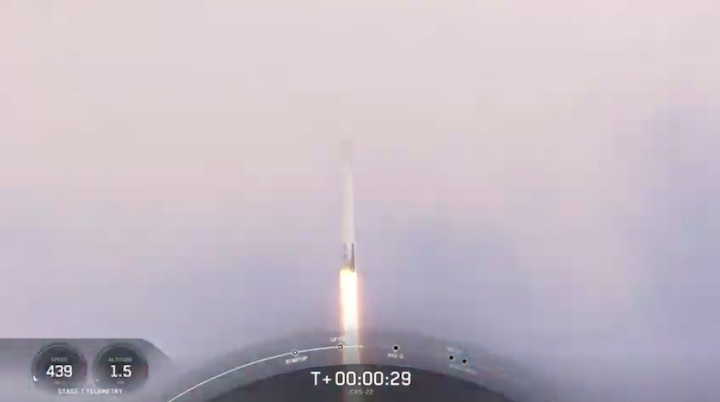

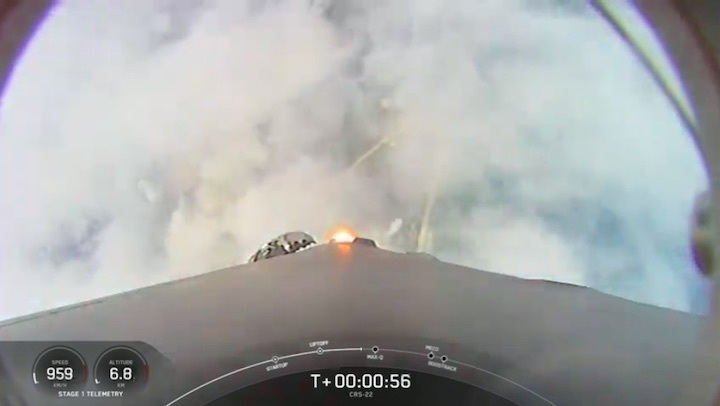
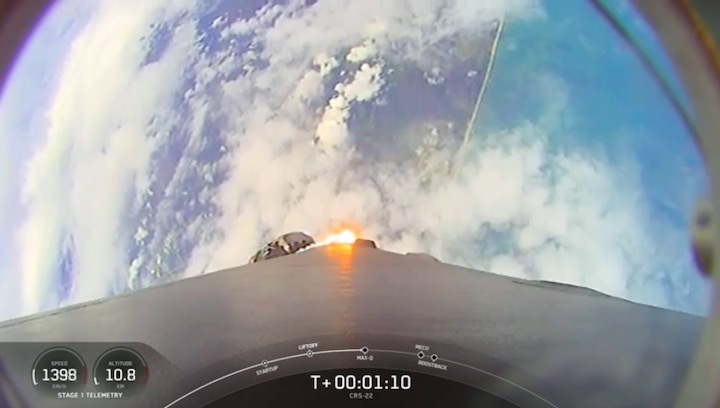
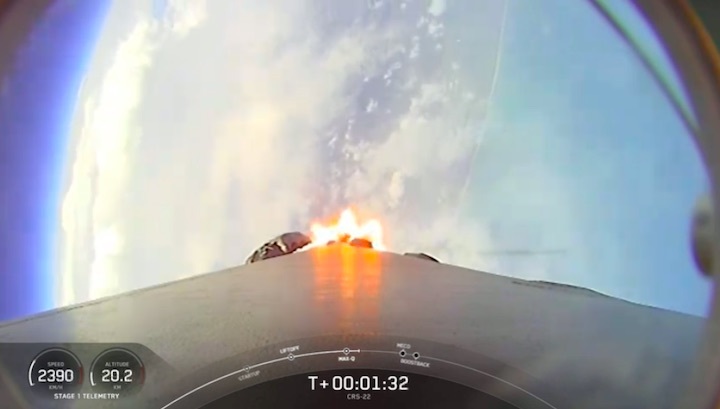
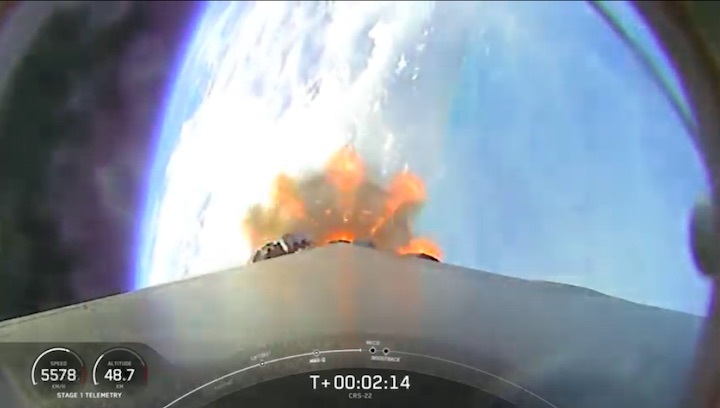
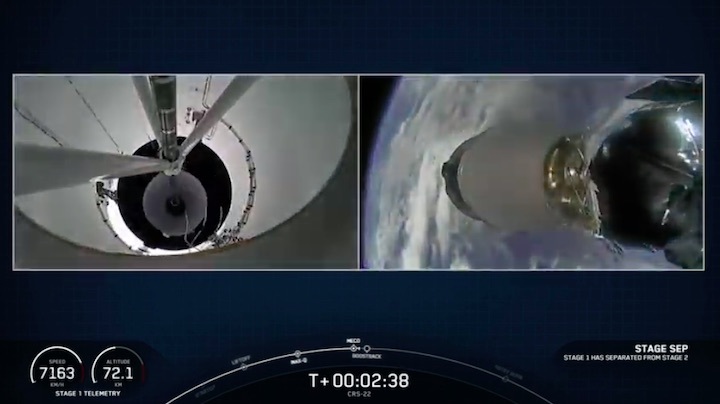

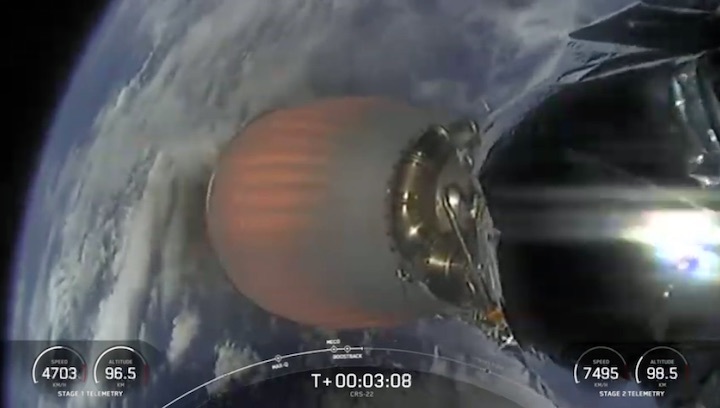
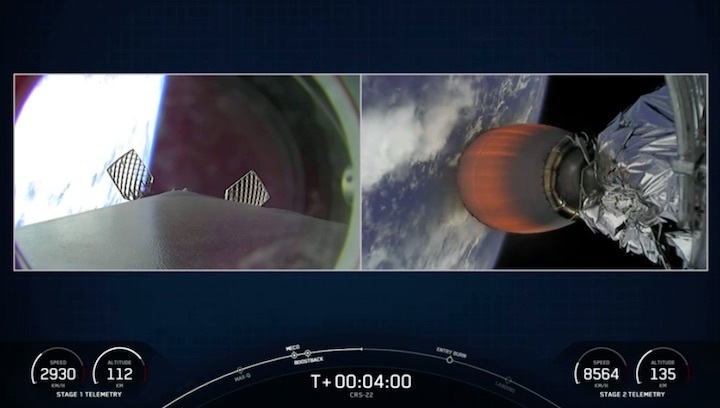
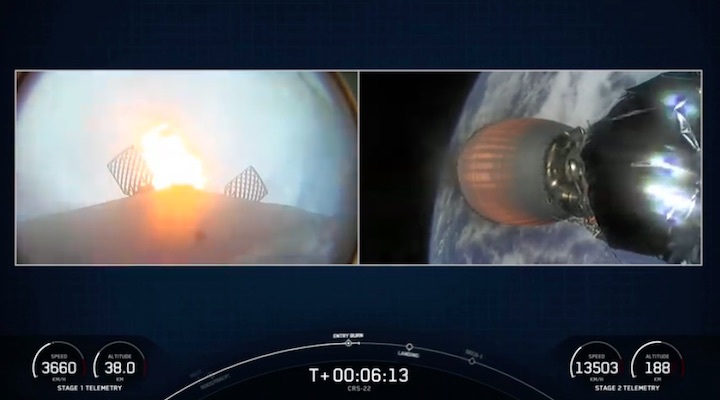


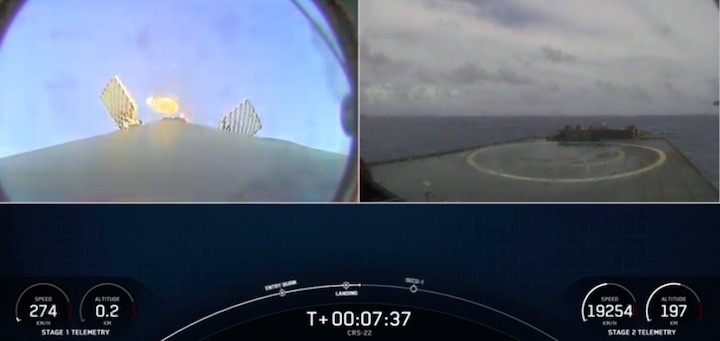

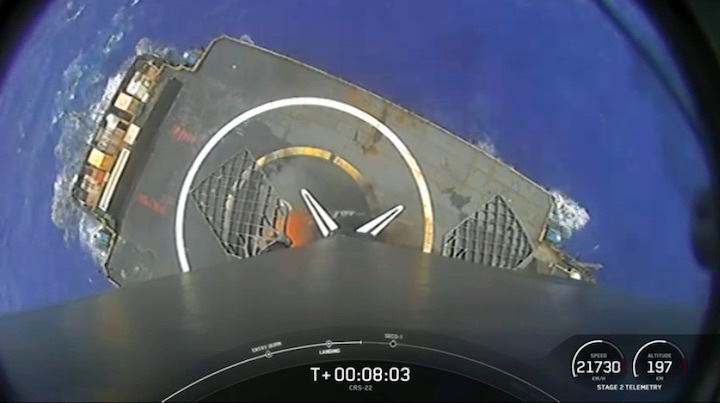
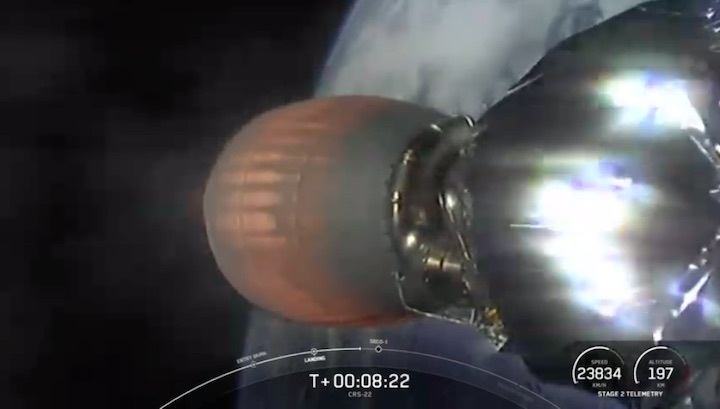
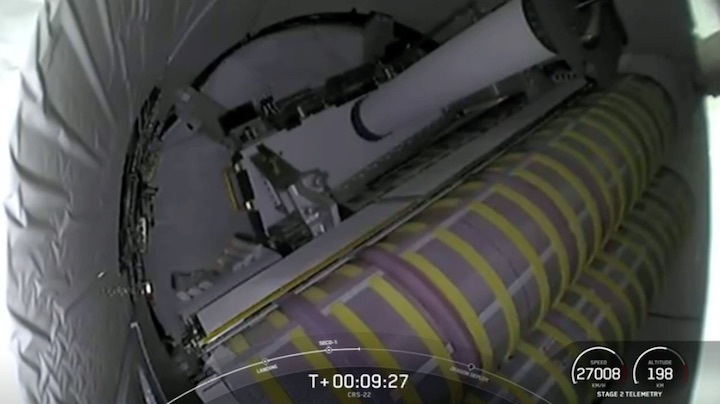

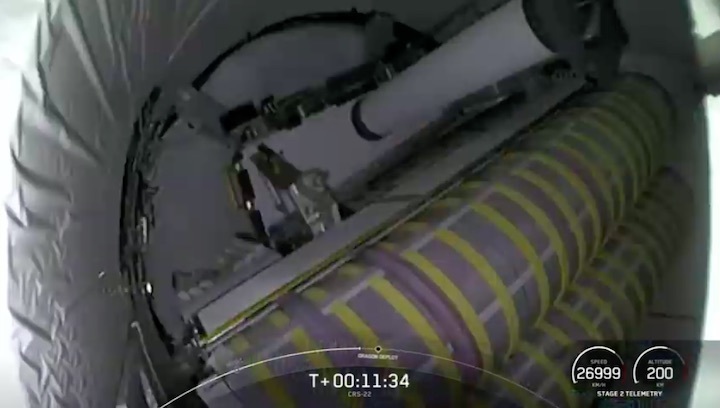
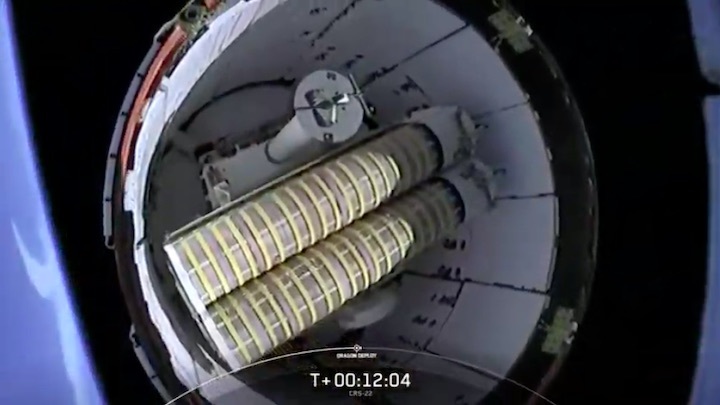
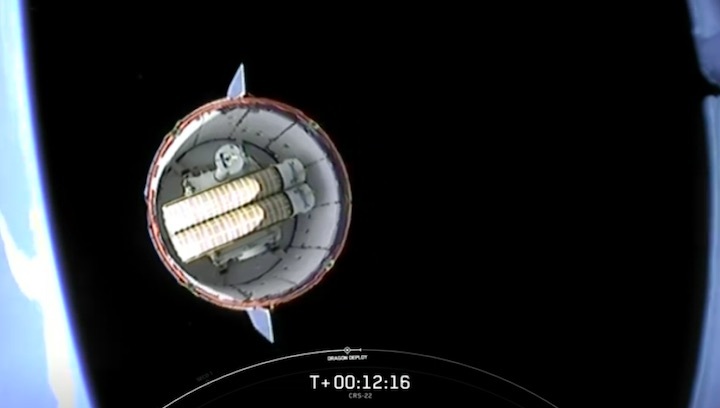
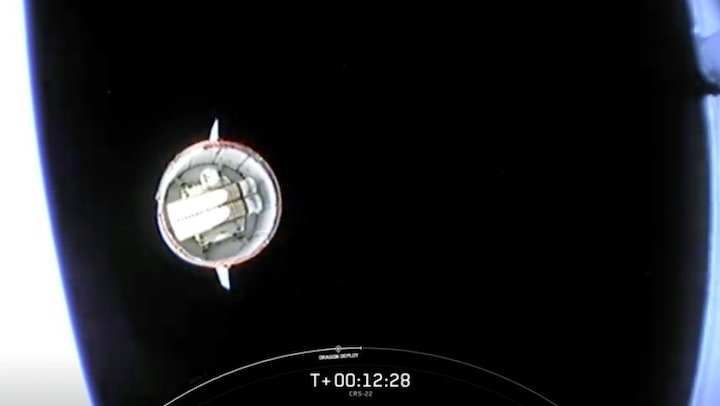
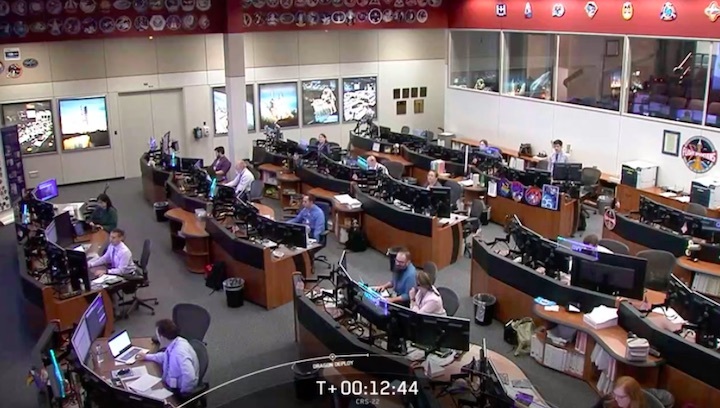
Quelle: SpaceX
+++
Nasa to launch baby squid to International Space Station
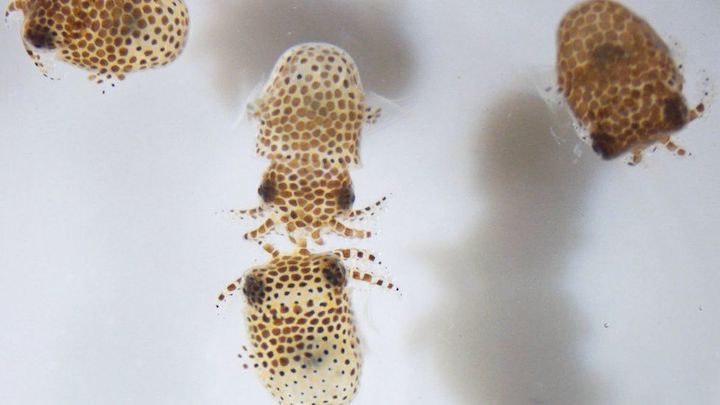
More than 100 baby squid and 5,000 microscopic animals are set to be launched to the International Space Station (ISS) on Thursday.
The creatures, along with other equipment for experiments, will head to the ISS aboard Space X's Falcon 9 rocket.
Its hoped that the experiments will be able to help scientists understand the effects of spaceflight.
The launch at 13:29 EDT (17:29 GMT) will be broadcast live by Nasa.
The 128 baby bobtail squid will be used as part of research into the effects of spaceflight on beneficial interactions between microbes and animals.
The squid have an immune system which is similar to that of humans.
Nasa says the experiment could support the development of protective measures to preserve astronaut health during long space missions.
"Animals, including humans, rely on our microbes to maintain a healthy digestive and immune system. We do not fully understand how spaceflight alters these beneficial interactions," Jamie Foster, the experiment's principal investigator said.
She added that the squid will be able to address "these important issues in animal health".
The squid will be frozen before their return to Earth.
They are also joined on the Space X rocket by 5,000 tardigrades, more commonly referred to as water bears. The microscopic animals can tolerate environments more extreme than most life forms can. This makes them perfect for studying how life responds and adapts to extreme environments.
It is hoped that this information can then be used to understand the stress factors affecting humans in space.
"One of the things we are really keen to do is understand how tardigrades are surviving and reproducing in these environments and whether we can learn anything about the tricks that they are using and adapt them to safeguard astronauts," Thomas Boothby, the experiment's principal investigator said.
Other experiments due to be conducted include a look into whether robotic arms can be operated remotely using virtual reality along with a study into the production of tougher cotton.


